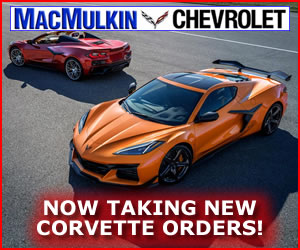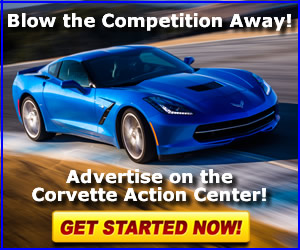D
DetailingDude
Guest
My Car Care Philosophy (Part 2)
A Better Understanding of OEM Paint
Hopefully you’ve read My Car Care Philosophy (Part 1). In that feature I covered how to deal with the things that are on top of your paint. My goal in this segment is to give you a better understanding of your paint so that should damage ever happen to your paint you can keep from making the solution worse than the problem.
As car manufacturers continue their drive for profits they are also striving to make a better-looking and faster car. Over the years this quest has appeared to make the paints better but what has happened is that they have found an excellent way to balance those 3 objectives: The Clear Coat.
The Clear Coat, introduced on a broad scale by OEM's in 1987, is simply a non-pigmented layer of paint. It has allowed manufacturers to use far less paint all the while making the pigmented layer underneath look richer, the car lighter & faster and more profitable.
Visually the Clear Coat appears to be more optically clear than any previous method. However, it also makes any sort of “Optical Inhibitor” like surface contamination and surface scratches more apparent. (I’ll cover the specturm of optical inhibitors in more depth later)
I don't want to get side-tracked on this point, but since 1987 the clear coat has begun to get thinner and thinner. Although there is some variation between OEM’s, many are able to apply the Clear Coat so that it is as thin as a few sheets of paper.
While paint technology has advanced many consumers are still using the knowledge, products and techniques meant for thicker paint. With today’s paints there is much less of a margin for error (and the usage of abrasives) throughout the process.
Everyday I am asked to help out in selecting the right compound to remove various kinds of paint blemishes like swirls, scratches, and many different types of residue that seems to make its way onto the exterior surface.
However, the point that I continually drive home is that the damage may only be in their surface protection. Yes, a compound can probably easily remove a light surface scratch. However, compounds don’t know when to stop working: The compound stops working when you stop working.
The compound can quickly remove the wax and then start working on the paint/clear coat whereas a product that is specifically designed for dewaxing the exterior surface of automobiles can remove the wax to allow you a thorough inspection of your paint.
Before you attempt to remove what appears to be a below the surface optical inhibitor like a scratch I suggest you confirm that it IS below the surface.
Here’s a quick overview of the process I covered in Part 1
Step 1: Wash with a pH balanced car wash solution
This gets rid of the loose dirt without damaging the black plastic trim.
Step 2: Clay
This gets rid of the dirt that has taken up residency on top of the wax.
Step 3: DeWax
This gets rid of the wax thus removing light surface scratching that is in the layers of wax.
Step 4: Conduct a thorough inspection of the paint
Your paint is now 'naked' and any below surface optical inhibitors can easily identified and a decision can be made as to their removal or minimization.
By using the above processYou now have naked paint and can see what the true condition of your paint is and what course of action should be taken to minimize or remove any damage that is below the surface. My philosophy is “Don’t use abrasives unless you have to.”
What you have to remember is that OEM Clear Coats are only as thick as a few sheets of paper. Anytime you buff the car with any sort of abrasive you are making the Clear Coat thinner. Another concern about reducing the Clear Coat thickness is that you are also reducing the built-in UV block abilities thus making the pigmented layer more susceptible to fading.
What I am saying is don’t love your paint to death.
In Part 3 I will cover dealing with "below the surface optical inhibitors."
A Better Understanding of OEM Paint
Hopefully you’ve read My Car Care Philosophy (Part 1). In that feature I covered how to deal with the things that are on top of your paint. My goal in this segment is to give you a better understanding of your paint so that should damage ever happen to your paint you can keep from making the solution worse than the problem.
As car manufacturers continue their drive for profits they are also striving to make a better-looking and faster car. Over the years this quest has appeared to make the paints better but what has happened is that they have found an excellent way to balance those 3 objectives: The Clear Coat.
The Clear Coat, introduced on a broad scale by OEM's in 1987, is simply a non-pigmented layer of paint. It has allowed manufacturers to use far less paint all the while making the pigmented layer underneath look richer, the car lighter & faster and more profitable.
Visually the Clear Coat appears to be more optically clear than any previous method. However, it also makes any sort of “Optical Inhibitor” like surface contamination and surface scratches more apparent. (I’ll cover the specturm of optical inhibitors in more depth later)
I don't want to get side-tracked on this point, but since 1987 the clear coat has begun to get thinner and thinner. Although there is some variation between OEM’s, many are able to apply the Clear Coat so that it is as thin as a few sheets of paper.
While paint technology has advanced many consumers are still using the knowledge, products and techniques meant for thicker paint. With today’s paints there is much less of a margin for error (and the usage of abrasives) throughout the process.
Everyday I am asked to help out in selecting the right compound to remove various kinds of paint blemishes like swirls, scratches, and many different types of residue that seems to make its way onto the exterior surface.
However, the point that I continually drive home is that the damage may only be in their surface protection. Yes, a compound can probably easily remove a light surface scratch. However, compounds don’t know when to stop working: The compound stops working when you stop working.
The compound can quickly remove the wax and then start working on the paint/clear coat whereas a product that is specifically designed for dewaxing the exterior surface of automobiles can remove the wax to allow you a thorough inspection of your paint.
Before you attempt to remove what appears to be a below the surface optical inhibitor like a scratch I suggest you confirm that it IS below the surface.
Here’s a quick overview of the process I covered in Part 1
Step 1: Wash with a pH balanced car wash solution
This gets rid of the loose dirt without damaging the black plastic trim.
Step 2: Clay
This gets rid of the dirt that has taken up residency on top of the wax.
Step 3: DeWax
This gets rid of the wax thus removing light surface scratching that is in the layers of wax.
Step 4: Conduct a thorough inspection of the paint
Your paint is now 'naked' and any below surface optical inhibitors can easily identified and a decision can be made as to their removal or minimization.
By using the above processYou now have naked paint and can see what the true condition of your paint is and what course of action should be taken to minimize or remove any damage that is below the surface. My philosophy is “Don’t use abrasives unless you have to.”
What you have to remember is that OEM Clear Coats are only as thick as a few sheets of paper. Anytime you buff the car with any sort of abrasive you are making the Clear Coat thinner. Another concern about reducing the Clear Coat thickness is that you are also reducing the built-in UV block abilities thus making the pigmented layer more susceptible to fading.
What I am saying is don’t love your paint to death.
In Part 3 I will cover dealing with "below the surface optical inhibitors."




